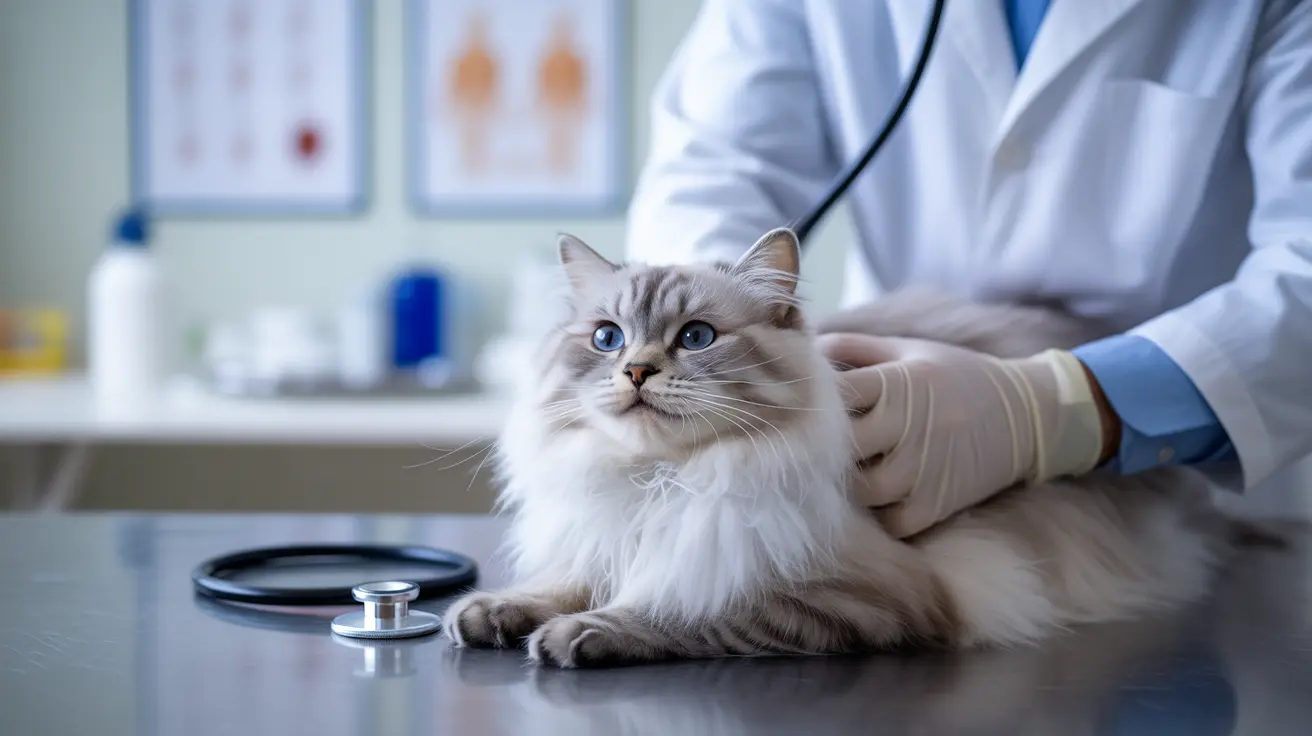When your feline companion develops cat throat cancer, particularly in the larynx or trachea area, it can be a distressing and challenging experience for both pet and owner. This serious condition, while rare, requires prompt attention and understanding to ensure the best possible outcome for your beloved pet.
In this comprehensive guide, we'll explore everything you need to know about throat cancer in cats, including early warning signs, diagnostic procedures, treatment options, and ways to support your cat through their journey.
Understanding Feline Throat Cancer
Cat throat cancer, particularly chondrosarcoma, is a malignant tumor that develops in the cartilage cells of the respiratory tract. While relatively uncommon in cats, it typically affects middle-aged and older felines, with male cats showing a slightly higher predisposition to the condition.
This aggressive form of cancer primarily targets the larynx (voice box) and trachea (windpipe), though it can occasionally develop in other cartilaginous areas of the body. The exact cause remains unknown, with no clear hereditary or environmental risk factors identified.
Early Warning Signs and Symptoms
Recognizing the early signs of throat cancer in cats is crucial for timely intervention. Common symptoms include:
- Difficulty breathing or noisy breathing (stridor)
- Changes in voice or loss of meow
- Persistent coughing
- Difficulty swallowing or reluctance to eat
- Excessive drooling
- Unexplained weight loss
- Lethargy and reduced activity levels
- Bad breath (halitosis)
Diagnosis and Assessment
Veterinarians employ various diagnostic tools to confirm throat cancer in cats:
- Physical examination and medical history review
- Blood work and urinalysis
- Advanced imaging (X-rays, CT scans, or MRI)
- Endoscopic examination
- Tissue biopsy for definitive diagnosis
Treatment Options and Management
Treatment for cat throat cancer typically involves a multi-modal approach:
Surgical Intervention
Surgery remains the primary treatment option, which may include:
- Tumor removal with wide margins
- Partial or complete laryngectomy
- Tracheal resection and anastomosis
- Creation of a permanent tracheostomy in severe cases
Supportive Care
Additional care measures include:
- Pain management medications
- Nutritional support, possibly through feeding tubes
- Antibiotics to prevent secondary infections
- Regular monitoring and follow-up care
Post-Treatment Care and Recovery
Recovery requires dedicated attention to your cat's needs:
- Creating a quiet, comfortable recovery space
- Ensuring easy access to food, water, and litter box
- Monitoring breathing patterns and eating habits
- Regular veterinary check-ups
- Maintaining proper pain management
Frequently Asked Questions
What are the common symptoms of throat cancer in cats, and how can I identify them early?
Early signs include breathing difficulties, voice changes, coughing, excessive drooling, and difficulty eating. Any persistent changes in breathing or eating patterns should prompt immediate veterinary consultation.
How is throat cancer diagnosed in cats, and what diagnostic tests are typically used?
Diagnosis involves physical examination, blood work, imaging studies (X-rays, CT scans, or MRI), and usually requires a tissue biopsy for confirmation. Endoscopic examination may also be necessary.
What are the treatment options for throat cancer in cats, and what are the chances of successful recovery?
Treatment primarily involves surgical removal of the tumor, often combined with supportive care. Success rates vary depending on tumor size, location, and stage at diagnosis, but early intervention typically offers the best chance for recovery.
How can I manage the quality of life for a cat with throat cancer, especially after surgery?
Focus on providing a stress-free environment, ensuring proper pain management, maintaining good nutrition, and following all post-operative care instructions. Regular veterinary check-ups are essential for monitoring progress.
What is the prognosis for a cat diagnosed with chondrosarcoma of the larynx or trachea, and what factors affect life expectancy?
Prognosis varies but is generally guarded, with survival times ranging from months to a year post-diagnosis. Factors affecting prognosis include tumor size, location, completeness of surgical removal, and the cat's overall health status.
Remember, while a diagnosis of throat cancer in your cat can be overwhelming, understanding the condition and working closely with your veterinary team can help ensure the best possible care for your beloved pet.






